Aegean The Germans evacuate Mytilene.
The exiled Greek government moves from Cairo to Caserta in southern Italy to be nearer to home when the time comes for the return.
[  ] ]
Air Operations, Carolines - US carrier aircraft from Task Group 38.4 and a force of 4 3rd Fleet escort carriers covers a US surface force as it arrives to begin a final bombardment of invasion objectives in the Palau Islands. Aircraft and warships open a coordinated bombardment, especially of Peleliu Island.
- During the night, 868th Heavy Bomb Squadron SB-24s attack airfields and Japanese defenses in the Palau Islands.
[  | |   ] ]
Air Operations, CBI
BURMA
- 4 10th Air Force B-24s attack the Katha area.
- 8 10th Air Force P-47s conduct a sweep along the Irrawaddy River from Bhamo to Katha.
- 3 P-47s strafe buildings in Katha.
- 16 P-47s attack the airfield at Loiwing and targets of opportunity along the Burma Road from Lungling (China) to Wanling and Namhkam.
CHINA
- 15 14th Air Force P-40s attack coastal and river shipping in southern China, the South China Sea, and the Red River in French Indochina.
- 22 341st Medium Bomb Group B-25s attack Kaochishih and Tunghsiangchiao, and the Kiyang area.
- 14 B-25s attack the town area and bridges in and around Sungpai.
- 10 B-25s and 6 14th Air Force P-40s attack Lungling.
- 27 P-40s and P-51s attack targets across a wide area of east-cental China.
- 23rd and 5th CACW Fighter group P-40s and P-51s down 1 D3A 'Val' dive bomber and 3 Japanese fighters in a series of engagements from Chuanhsien to near Changsha between 1500 and 1530 hours.
- 25 7th Heavy Bomb Group B-24s transport fuel from India to Kunming.
[  | |   ] ]
Air Operations, East Indies - 380th Heavy Bomb Group B-24s attack Lautem, Timor.
- FEAF B-24s attack three airfields on Celebes.
- B-24s attack the Galela and Kaoe airfields on Halmahera.
- 38th Medium Bomb Group B-25s attack radar facilities on Morotai at extremely low level.
- V Fighter Command P-38s dive-bomb the Namlea airfield on Boeroe.
- P-47s attack the Boela airfield on Ceram.
[  | |   ] ]
Air Operations, Europe
RAF BOMBER COMMAND
Daylight Ops:
- 412 aircraft of Nos. 4, 6 and 8 Groups are sent to bomb synthetic oil plants at Dortmund, Scholven/Buer and Wanne-Eickel. Included in the aircraft total are 315 Halifaxes, 75 Lancasters and 22 Mosquitos. The Dortmund raid is particularly successful, but smoke screens prevent results from being observed at the other targets.
- 3 Lancasters and 1 Halifax are lost on the Wanne-Eickel raid and 2 Halifaxes and 1 Lancaster on the Scholven/Buer raid.
- 119 Halifaxes of No. 4 Group and 5 Pathfinder Lancasters carry out the first raid by RAF heavy bombers on Münster since June 1943. Many fires are seen but smoke prevented an accurate assessment of the bomb damage. A brief report from Münster describes a 'sea of fire' in the southern part of the town which could not be entered for several hours and tells of water mains destroyed by high-explosive bombs so that 'the firemen could only stand helpless in front of the flames'.
Minor Ops:
- 2 aircraft are on Resistance operations and there are 9 RCM sorties.
Evening Ops:
- 378 Lancasters and 9 Mosquitos of Nos. 1, 3 and 8 Groups are sent to Frankfurt, the last major raid on this city by the RAF. The bombers drop 400,000 incendiaries on the city. The local report says that the raid occurred when many of the city's firemen and rescue workers were away working in Darmstadt. The bombing caused severe destruction in the western districts of the city, which contained many industrial premises. Property damage was extensive. A troop train was hit at the West Station.
- 204 Lancasters and 13 Mosquitos of Nos. 1 and 5 Groups are sent to Stuttgart. The attack is successful and local reports say a firestorm was created.
Other Ops:
- Support and 138 training aircraft make a diversionary sweep over the North Sea, 29 Mosquitos are sent to Berlin and 6 to Steenwijk, 12 Halifaxes lay mines in Oslo harbor, and there are 81 Mosquito patrols and 31 RCM sorties.
- 1 Halifax is lost on the diversionary sweep and 1 from mine-laying.
US 8th AIR FORCE
GERMANY:
- 813 8th Air Force heavy bombers, escorted by 579 VIII Fighter Command fighters, attack an aircraft-engine factory, two oil refineries, four synthetic-oil plants, an oil depot, and various targets of opportunity. Opposition by an estimated 400 to 450 Luftwaffe fighters results in the loss of 35 heavy bombers and 12 USAAF fighters.
- 8th and 9th Air Force fighter pilots down 96 Luftwaffe fighters over Germany between 1050 and 1615 hours.
US 9th AIR FORCE
ETO:
- 9th Air Force fighters and fighter-bombers support US Army ground forces in the Franco-Belgian-German border areas.
- IX Troop Carrier Command transports mount more than 400 supply and evacuation sorties.
- IX TAC fighter pilots down 6 Bf-109s in the border area at 1430 hours.
- During the night, specially equipped, bomb-armed 474th Fighter Group P-38s fly night-intruder missions against German Army supply columns.
FRANCE:
- IX Bomber Command bombers attack German Army fortifications at Nancy.
GERMANY:
- IX Bomber Command bombers attack a German armored division as it entrains at Sankt Wendel, and fortifications along the West Wall (Siegfried Line).
US 12th AIR FORCE
FRANCE:
- 12th Air Force fighter-bombers attack rail lines at Belfort and on the French side of the Swiss frontier near Basel.
GERMANY:
- In the 12th Air Force's first mission against a target on German soil, XII TAC fighter-bombers attack the rail line at Freiburg.
ITALY:
- 12th Air Force B-25s attack bridges spanning the Po River.
- 12th Air Force B-25s, B-26s, and fighter-bombers attack strongpoints, gun emplacements, troop concentrations, flak batteries, and other tactical targets as the German Army falls back from the embattled Gothic Line.
US 15th AIR FORCE
FRANCE:
- More than 50 15th Air Force B-24s transport supplies to US Army ground forces in southern France.
GERMANY:
- 15th Air Force B-24s attack an aircraft-engine factory and a jet-engine factory near Munich.
- B-17s and B-24s attack the airdrome at Lechfeld.
[  | |   ] ]
Air Operations, Japan 3 28th Composite Bomb Group bombers attack Suribachi airfield and nearby shipping in the Kurile Islands.
[  | |   ] ]
Air Operations, New Guinea V Bomber Command B-25s and A-20s, and V Fighter Command fighter-bombers attack the airfields at Babo, Manokwari, Moemi, Mongosah, Sagan, and Samate and anti-aircraft batteries.
[  | |   ] ]
Air Operations, Philippines - US carrier aircraft from Task Force 38 open an ad hoc offensive against airfields and other targets in the central Philippines. Japanese air opposition from Leyte is so much weaker than expected that US carriers station themselves within sight of land.
- 2 VF(N)-41 F6Fs down 1 G4M 'Betty' bomber at sea at 0755 hours.
- Carrier-based F6Fs (and a VB-19 dive-bomber crew) down 1 Ki-46 'Dinah' reconnaissance plane, 1 P1Y 'Galaxy' bomber, 1 D4Y 'Judy' dive bomber, and 77 Japanese fighters in almost continuous action over Cebu and Negros between 0900 and 1345 hours.
- 2 VF(N)-41 F6Fs down 1 Ki-46 'Dinah' reconnaissance plane at sea at 1846 hours.
[  | |   ] ]
Battle of the Atlantic - U-925 left for patrol on August 24, 1944 and was not heard from again. Her fate is not known. It could have been a drifting mine or the victim of an accident resulting from material or drill failure.
U-925|
| Class | Type VIIC |
| CO |
Oberleutnant zur See Helmut Knoke |
| Location |
N Atlantic, off Iceland |
| Cause |
Unknown |
| Casualties |
51 |
| Survivors |
None |
- The US freighter George Ade (7176t), en route from Mobile, Alabama to New York, via Key West, Florida, is torpedoed by U-518. There are no casualties among the 41-man crew or the 27-man Armed Guard. The salvage vessel Escape (ARS-6) takes the stricken vessel in tow. She is taken to Hampton Roads where the ship is repaired and returned to service.
[  | |   ] ]
Diplomatic Relations The armistice between Rumania and the Soviet Union, Great Britain and the United States is signed in Moscow. Rumania will take part in the war against Germany and Hungary supplying 12 divisions and will pay reparations for damage inflicted on Soviet territory. The frontier between the USSR and Rumania will be that fixed by the Rumanian-Soviet agreement of June 28, 1940. The USSR promises that Transylvania will be restored to Rumania.
During fighting in Hungary, Czechoslovakia and Germany, the Rumanian army is to lose a further 170,000 men killed, wounded and missing by April 1945.
[  | |   ] ]
Eastern Front A lull on the various fronts while the Russians consolidate, and overhaul their supply system. Red Army forces break through the Negotin gap in Yugoslavia, opening the way to the Dalmatian coast.
CENTRAL SECTOR
In Warsaw the 25th Panzer Division attacks in Zoliborz.
SOUTHERN SECTOR
The 6th Tank Army has redeployed at Maros in order to attack the German and Hungarian forces around Cluj. The Stavka elevates the 6th Tank to Guards status.
[  | |   ] ]
Italy At 11:00p.m. the second battle for the capture of the Coriano hill-top begins.
[  | |   ] ]
Pacific - The 16 aircraft carriers of the Mitscher group begin a 3-day attack against the central Philippines, meeting very little resistance from the Japanese air force and navy. No resistance forthcoming from Leyte, one of the objectives of the next landing. More than 200 Japanese planes are destroyed in the 2,400 missions flown.
- Adm William F. Halsey, commander of the Third Fleet, receives reports from Filipinos that Leyte has only a small force of Japanese infantry on the island. This information, combined with the lack of any appreciable response to the American air attack, prompts Halsey to recomment that offensive operations against Yap be cancelled in favor of an attack on Leyte.
- The US submarine Growler sinks two Japanese ships in the South China Sea: the destroyer Shikinami and the frigate Hirato.
- The US high speed transport Noa (APD-24) is sunk in a collison with the destroyer Fullam (DD-474) off Palau, Carolines.
- The US submarine Pampanito (SS-383) sinks the merchant passenger/cargo ship Kachidoki Maru (10,509t) and the tanker Zuiho Maru (5135t) about 400 miles southwest of Hong Kong.
- The US submarine Pipefish (SS-388) sinks the Japanese auxiliary vessel No.7 Hakutetsu Maru (1018t) off Shiono Misaki, Japan.
- The US submarine Sealion (SS-315) sinks the Japanese transport Nankai Maru (8416t) and the merchant passenger/cargo ship Rakuyo Maru (9419t) in the South China sea, east of Hainan Island.
[  | |   ] ]
Palau Islands The US battleships, cruisers and aircraft carriers under the command of Rear-Adms Oldendorf and Ford begin an intensive bombardment of the Palaus in advance of the landing. The Americans undertake the necessary mine-lifting and the destruction of under-water obstacles protecting the beaches.
The US high-speed transport Noa (APD-24) sinks after a collision with the destroyer Fullam (DD-474) in operations off the Palau Islands.
[  | |   ] ]
Romania The armistice between the Allies and Rumania is signed. The terms have been dictated by the Soviets and include reparations of $300,000,000 and the cession of territory to the USSR.
[  | |   ] ]
Western Front The 12,000-strong German garrison of Le Havre surrenders to the attacks of British I Corps. More units of the US 1st Army reach the German border between Aachen and Trier and advance up to 5 miles. Units of the 3rd Div push to within 1,000 yards of the Siegfried Line. Bridgeheads across the Moselle are established by the US XII Corps north and south of Nancy.
A German force of 20,000 men under Maj Gen Erich Elster formally surrenders to the US 83rd Inf Div at the Beaugency bridge on the Loire. Elster originally suggested a face-saving mock battle which the Americans would 'win'. The US commander, Robert C. Macon, turned him down, and the Germans laid down their arms without incident.
[  | |   ] ]
Images from September 12, 1944
Münster Damage
|
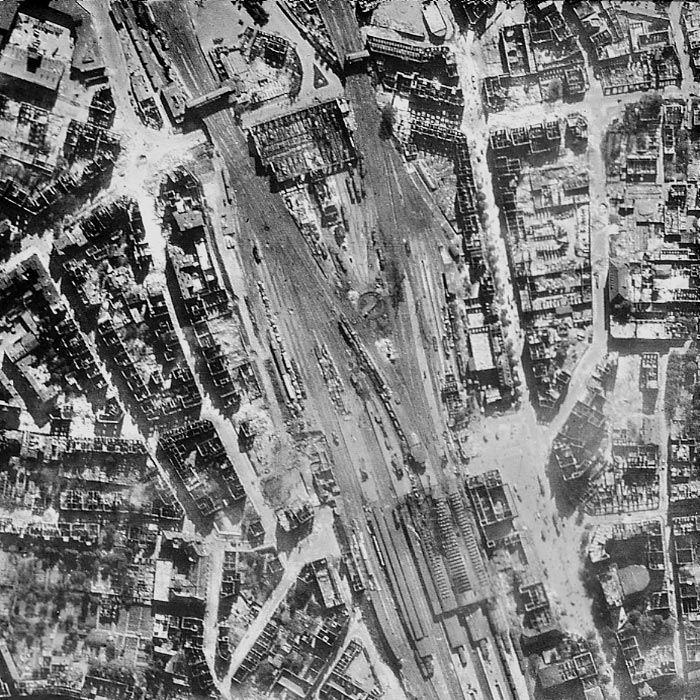 |
|
Daimler-Benz factory, Stuttgart
|
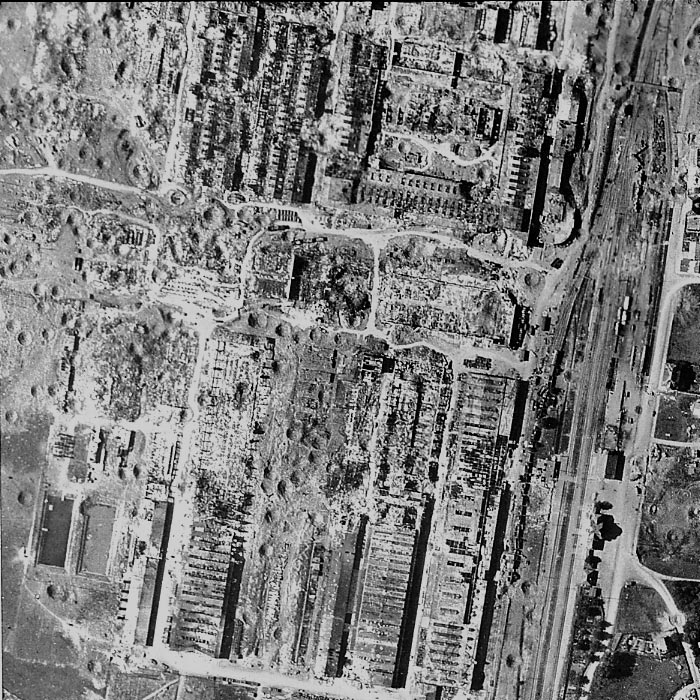 |
|
Belgian/Dutch Border
|
 |
|
Area of Noorbeek, Holland
|
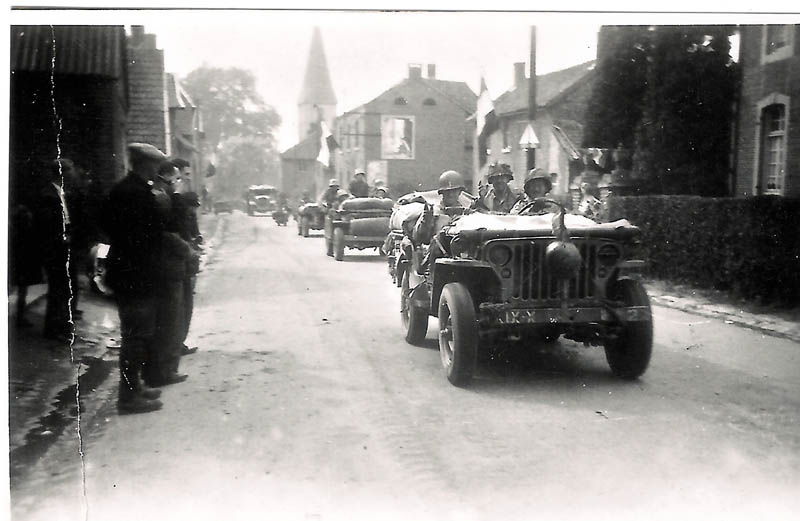 |
|
The Rakuyo Maru
|
 |
|
Survivors of the Sinking of the Rakuyo Maru
|
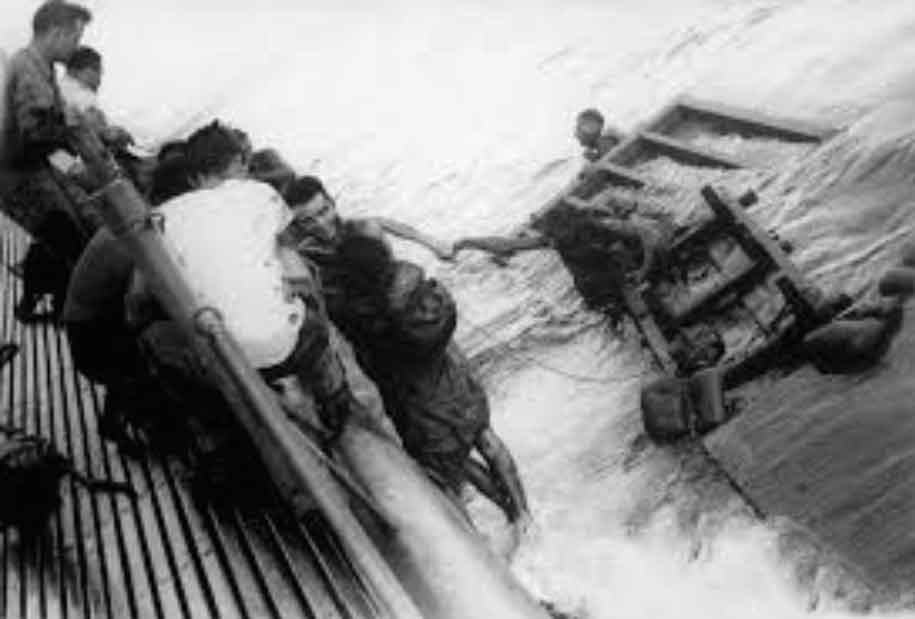 |
|
Crossing into Germany
|
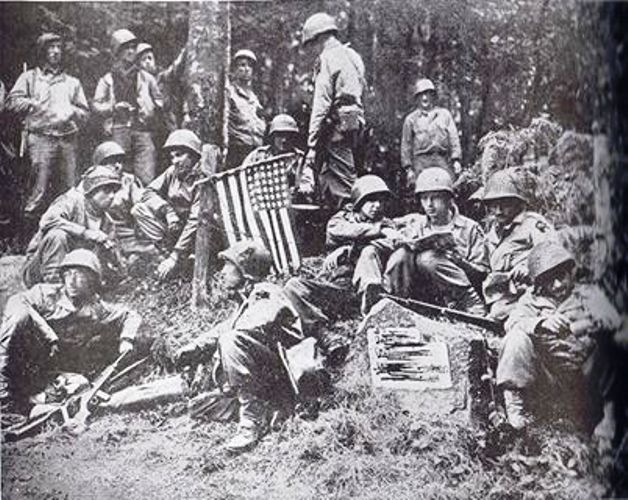 |
|
Hanging an Effigy of Hitler
|
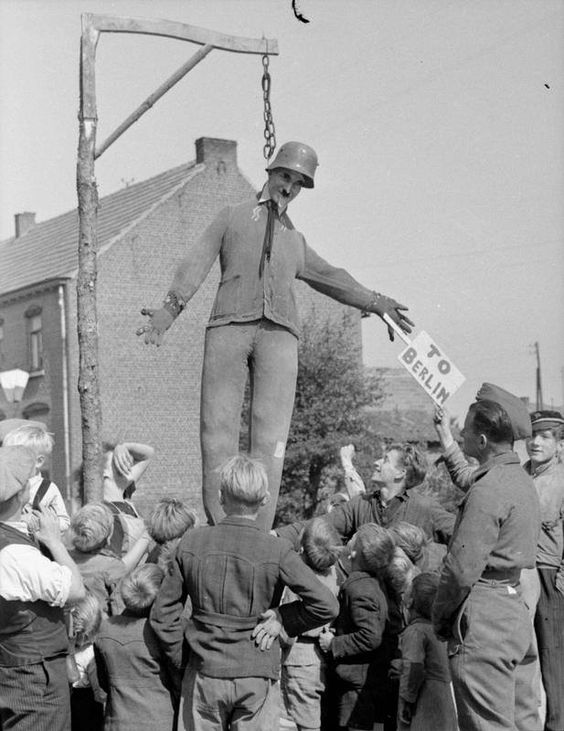 |
|
British Tanks in Heusden
|
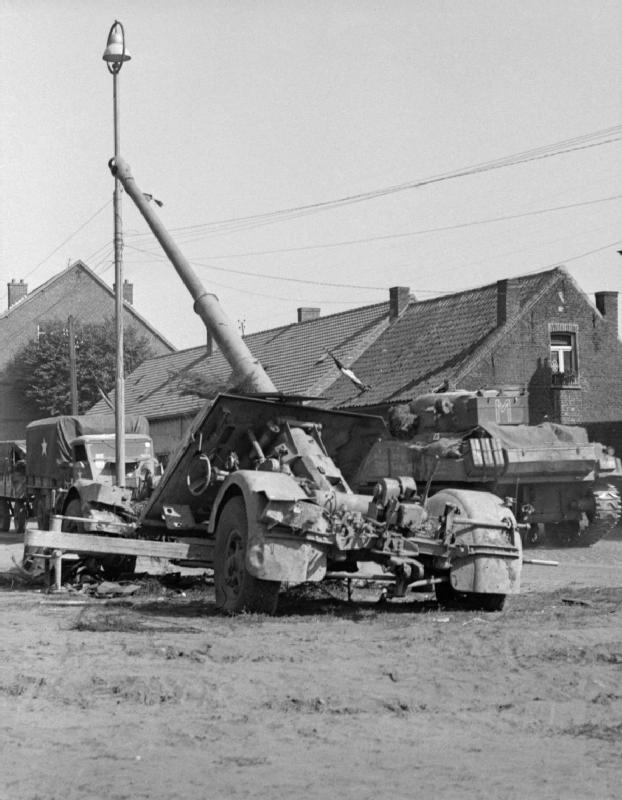 |
|
Bombing of Salzburg
|
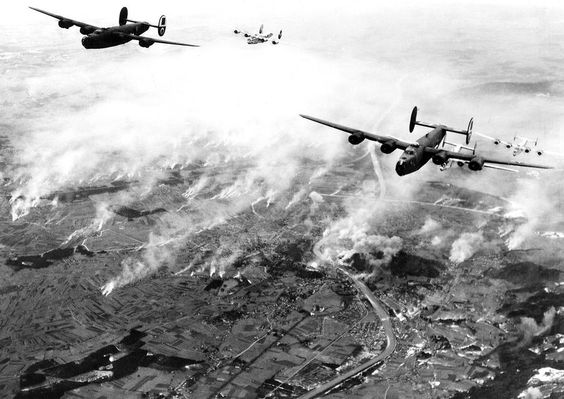 |
|
M4A1 Sherman Dozer
|
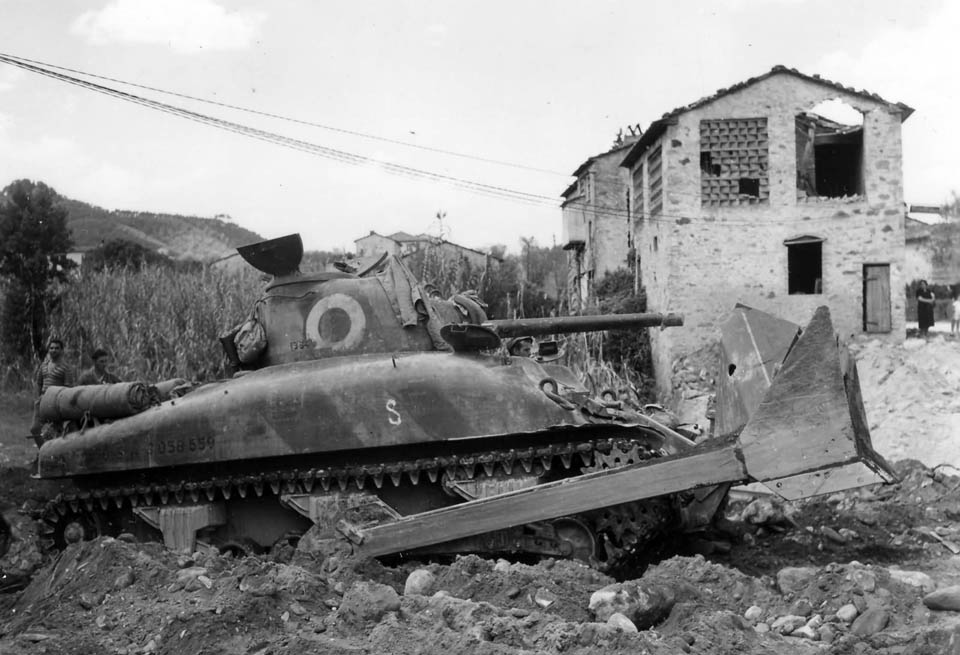 |
|
M10 Tank Destroyer
|
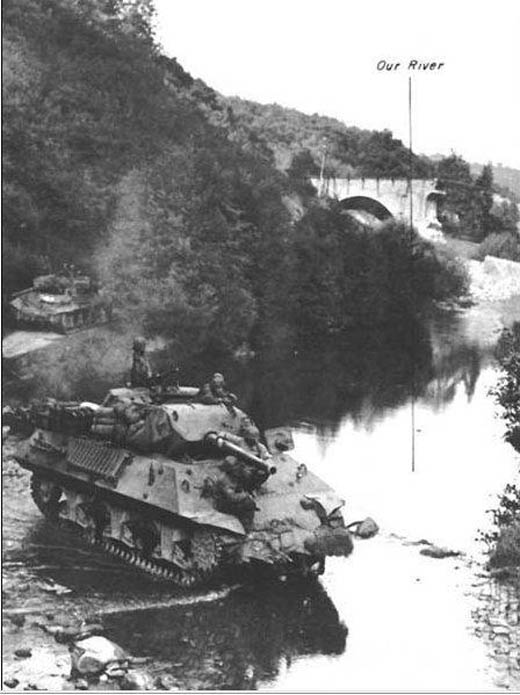 |
|
A 7.2-in Howitzer in Borgo San Lorenzo
|
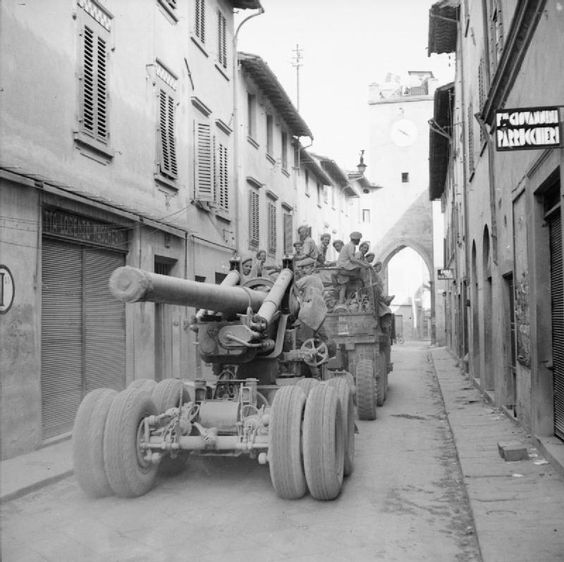 |
|
The Hague Residents Forced to Leave
|
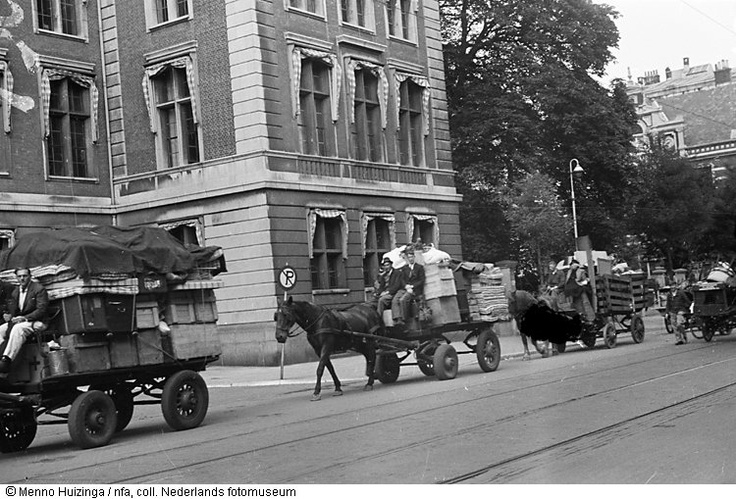 |
|
|













